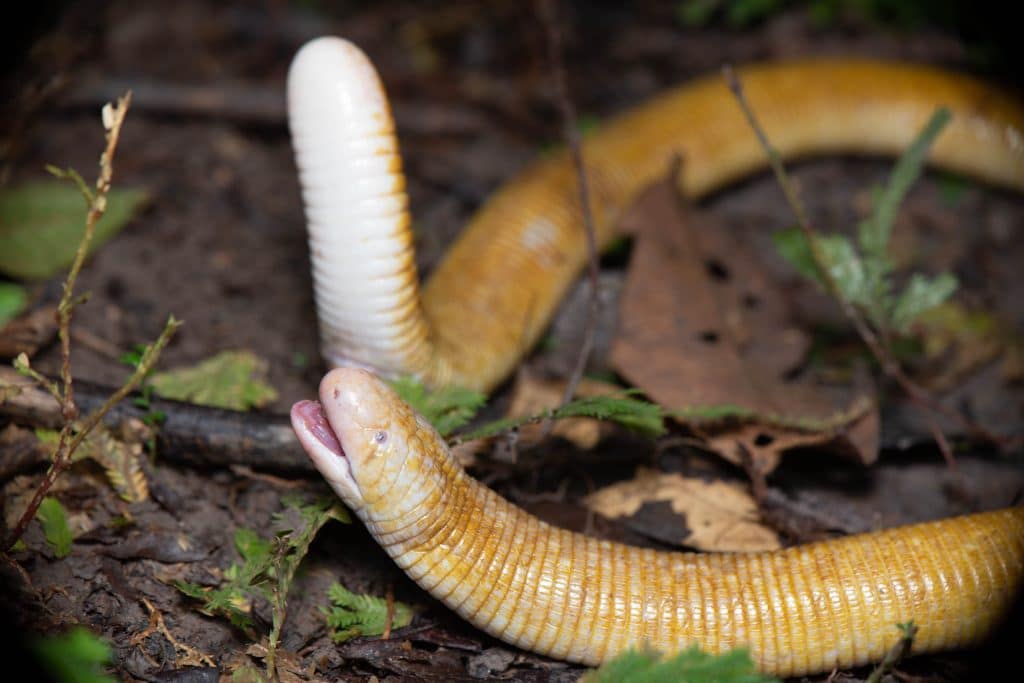It’s possible that no animal is better equipped to adapt to the changing environment than the squamate.
A new $1.5 million NSF-funded study from an NAU biologist is taking the first-ever look at the entire genome of more than 200 of the more than 11,000 species that make up Order Squamata, with the goal of unraveling how this order of terrestrial vertebrates has evolved in the last 240 million years.
Why does this matter? More than you might think—if you’re reading this in Arizona, you’re surrounded by squamates. You just know them better as lizards and snakes. And they’ve been on the planet so long, successfully adapting to new climates, new predators and prey and changing temperatures, that their genetic journey may provide insight into the evolutionary innovations that have occurred and may yet occur in all species on the planet—including us.
“With such a deep and rich history on earth and so many species, if there is an available lifestyle to fit an environmental niche, squamates at some point have evolved to exploit it,” said Marc Tollis, assistant professor in the School of Informatics, Computing, and Cyber Systems and principal investigator of the grant, which includes collaborators from Princeton University and the American Museum of Natural History in New York. “This not only makes them exciting models for all kinds of research, but they also have enthralled humans for centuries as they have taken on the roles of beloved deities or evil mediums in cultures across the world.”
What are squamates?
You may not have heard of the order, but you’re definitely familiar with the animals. Squamates are reptiles and are found on every continent except Antarctica. They’re found in deciduous and tropical forests, savannahs and grasslands, deserts and oceans, and have adapted to
They’ve also been on the planet for a very long time, which has meant countless opportunities to evolve. For instance, Tollis said, Anolis lizards that colonized islands in the Caribbean repeatedly evolved similar adaptations across different islands during short timespans, becoming an excellent example of evolutionary convergence. The ancestors of snakes lost their limbs, eyelids and ears; they received what Tollis called “the short stick” of traits, yet they are considered among the most successfully adapted creatures on the planet, with more than 3,400 living species. During the Cretaceous Period, one group of lizards moved into the water and evolved into mosasaurs, some of the most powerful marine predators that ever lived, contributing to the extinction of several other types of marine reptiles at the time while rivaling modern killer whales in their size and ferocity.
“Squamates have such a deep history with so many twists and turns, they make an excellent case study in both adaptive radiation and evolutionary constraint,” he said. “With squamates, you can always say, ‘life finds a way.’”
Why the squamate tree of life matters

Despite the reality that lizards and snakes are common, a complete DNA catalog of biodiversity with squamates has never been collected. This project will help fill that gap. Tollis and his collaborators will use high-tech processes to characterize the sizes and shapes of bones in hundreds of species of squamates, both living and extinct. These data will provide a map of how the phenotype has changed over the 240-million-year-old squamate family tree. DNA sequencing and other genomic analyses will help demonstrate not only which traits changed over time but also when—at what point, in the last 240 million years, snakes became what we know as snakes.
They also will use this data to determine what aspect of the genome is more responsible for the changes in characteristics over time, which is a major debate in genetics internationally.
The team will sequence the complete genome of 100 species in order to reach the goal of a complete genome representation for more than 90 percent of all squamate families. Tollis’ lab will use bioinformatics and big data—much of it using the Monsoon High Performance Computing Cluster at NAU—to uncover the patterns and processes that have shaped species and their genomes over millions of years, thus providing a valuable foundation of genomic data for future research into the thousands of squamates still left to study.
“The main question of this project—what are the genetic roots of biodiversity, especially in reptiles—is something I have thought about since I was around 12 years old,” he said. “It’s a dream project for me.”
Top photo: A South American red worm lizard (Amphisbaena alba) is part of a group of underground-dwelling squamates called amphisbaenians, whose leglessness have a completely independent evolutionary origin than that of snakes. Amphisbaenians live in North America, South America, the Caribbean, Europe, Africa, and Western Asia. Some amphisbaenians have small reduced front limbs used for digging, and all have severely reduced eyes. Many different types of squamates have evolved leglessness or reduced limbs, but none have ever re-evolved limbs, as far as scientists know. Photo by José Martinez-Fonseca.
Heidi Toth | NAU Communications
(928) 523-8737 | heidi.toth@nau.edu




